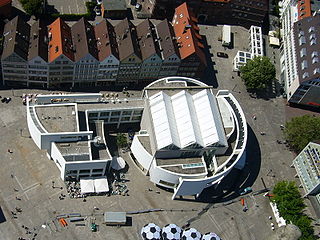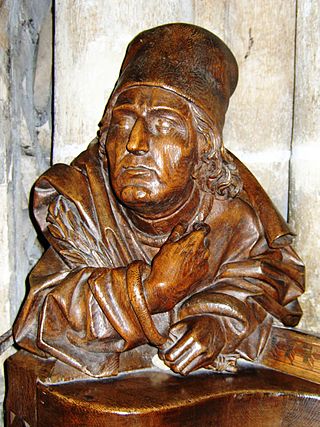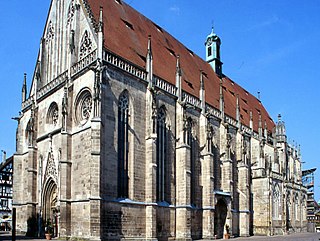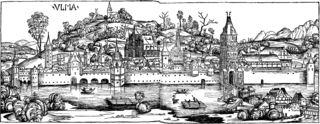Life
Gertrud Otto was born in Memmingen, the daughter of Gustav Otto and Berta Otto, née Derpsch, Her father was the publisher of the Memminger Zeitung as well as a print shop owner. After elementary school she attended the secondary school for girls in Memmingen. In 1910 at the age of 15 she left Memmingen and went to Munich, which at the time was the only place where it was possible for girls to take their Abitur. In July 1916 she passed the Abitur at the Ludwigsgymnasium. She was one of the first women to take the Abitur in Bavaria.
Academic career
Her further career aspiration was to take up a degree in art history, which was not immediately possible because of the war. As part of the war aid organization, she worked for two years in the editorial office of the Memminger Zeitung and completed a year-long home economics training in Memmingen.
In September 1919 she began studying art history, classical archaeology, pedagogy and psychology at the University of Munich. Three years later - in 1922 - she moved to the University of Tübingen. There she submitted her dissertation Die Ulmer Plastik in der Spätgotik (Ulm Sculpture in the Late Gothic) and passed her doctorate on 13 December 1923. She then became an assistant of Georg Weise at the Art History Institute of the University of Tübingen. [1] She stayed there for 17 years.
Nazi era and World War II
After the Nazis came to power, a difficult time began for Gertrud Otto because she did not sympathize with the Nazi ideology. In order not to lose her job, she became a member of the Nazi women's association in 1935, but refused to become a member of the NSDAP. On 31 March 1936, she was advised to leave university voluntarily.
On 31 March 1941, Otto left the Art History Institute in Tübingen and began work with Otto Kletzl at the newly founded University of Posen, which urgently needed academic staff, including women. On November 26, 1943 Otto completed her habilitation there with the work Das Werk des Ulmer Bildhauers Gregor Erhart (The work of the Ulm sculptor Gregor Erhart). When the Red Army advanced to Posen, Gertrud Otto was evacuated on 20 January 1945; she experienced the end of the war in Memmingen.
Postwar
From May 1945 to August 1947 she tried in vain to regain a professional footing. In 1947 she applied for a job at the Städtische Realschule, today's Vöhlin-Gymnasium. There she was allowed to teach German and history by the hour. In 1952 she was proposed for the office of deputy school director. It came to light that she had not passed a teaching degree, and it took the intervention of the then mayor Heinrich Berndl to allow her to teach. He managed to keep her employed, albeit under considerably worse conditions: her service contract could be terminated every year, and her number of hours was reduced. The remuneration was correspondingly modest.
In addition to teaching, Gertrud Otto devoted herself again to art historical research and also published. In 1953 she was the first woman in Memmingen to visit the Buxheim choir stalls in the chapel of St. Savior's Hospital in London . Two years later she toured the ancient sites of Greece. In 1960 Gertrud Otto retired from teaching.
During her retirement, she wanted to go to America to research Bernhard Strigel's works there . She even took English lessons from a colleague. A serious illness with subsequent constant care prevented this. In 1970, at the age of 75, she suffered a heart attack and died on 12 October 1970 in Memmingen, where she is buried.
The city of Memmingen honoured her by naming a street after her in the south of the city.

Ulm is a city in the state of Baden-Württemberg in southern Germany, situated on the river Danube on the border with Bavaria. The city, which has an estimated population of more than 126,000 (2018), forms an urban district of its own and is the administrative seat of the Alb-Donau district and the 11th largest of all cities on the Danube river.

Memmingen is a town in Swabia, Bavaria, Germany. It is the economic, educational and administrative centre of the Danube-Iller region. To the west the town is flanked by the Iller, the river that marks the Baden-Württemberg border. To the north, east and south the town is surrounded by the district of Unterallgäu.

Ulm Minster is a Lutheran church located in Ulm, State of Baden-Württemberg (Germany). It is currently the tallest church in the world. The church is the fifth-tallest structure built before the 20th century, with a steeple measuring 161.53 metres.

Max Bill was a Swiss architect, artist, painter, typeface designer, industrial designer and graphic designer.

Upper Swabia is a region in Germany in the federal states of Baden-Württemberg and Bavaria. The name refers to the area between the Swabian Jura, Lake Constance and the Lech. Its counterpart is Lower Swabia (Niederschwaben), the region around Heilbronn.

The Upper Swabian Baroque Route is a tourist theme route through Upper Swabia, following the themes of "nature, culture, baroque". The route has a length of about 500 km. It was established in 1966, being one of the first theme routes in Germany. There is an extension to the route into Switzerland and Austria around Lake Constance.

Gregor Erhart was a German sculptor who was born at Ulm, the son of sculptor Michel Erhart. Gregor spent his working career at Augsburg, where he was made master in 1496, and where he died.

Johann Martin Miller was a German theologian and writer. He is best known for his novel Siegwart, which became one of the most successful books at the time.

The Stadthaus Ulm is in the centre of Ulm (Germany), located on the Münsterplatz. Primarily, the building is used to present exhibitions of photography and modern and contemporary art. A lecture hall is used for a variety of events, activities, and workshops, including a festival of modern music. It houses the city's tourist information centre and other public services on the ground floor. A permanent exhibition of the archaeology and history of the Münsterplatz is located on the lower level.

Michel Erhart was a German late Gothic sculptor who lived and worked in Ulm.

Jörg Syrlin the Elder was a German sculptor who is considered part of the Ulm school. After his death his son Jörg Syrlin the Younger took over command of his workshop. His best known works are the carvings for the choir stalls of the Ulm Minster.

Daniel Mauch was a late Gothic German sculptor. He was born in Ulm and died in Liège.

Peter Hemmel of Andlau was a late Gothic stained glass artist, whose workshop in Strasbourg was active between 1447 and 1501. Sometimes working alone and sometimes in collaboration with other stained-glass artists in the city, it mainly supplied religious buildings in what is now Austria, southern and eastern Germany, eastern France and northern Italy, though none of Hemmel's windows survive in Andlau itself.

Heinrich Parler the Elder, was a German architect and sculptor. His masterpiece is Holy Cross Minster, an influential milestone of late Gothic architecture in the town of Schwäbisch Gmünd, Baden-Württemberg, Germany. Parler also founded the Parler family of master builders and his descendants worked in various parts of central Europe, especially Bohemia. His son, Peter Parler, became one of the major architects of the Middle Ages. The family name is derived from the word Parlier, meaning "foreman".

The Museum Ulm, founded in 1924, is a museum for art, archeology, urban and cultural history in Ulm, Germany.

Walter August Wilhelm Hentschel was a German art historian.

Anton Josef Reiss, also Reiß was a German sculptor. Based in Düsseldorf, he focused on sacred art for churches, including a marble Pietà for St. Gereon in Cologne in a style close to the Nazarene movement.

Anna Meder, born Anna Görlin or Gerlin or Gerler in Steinenkirch was a German printer of the 17th century in Ulm.

The Catholic parish church St. Ulrich is a Baroque church of the 18th century in Amendingen.

The cultural heritage management city parish church of St. Martin in Memmingen is one of the oldest churches in Upper Swabia. The church is a landmark of the city and is located on the edge of the northwestern old town, in the old Protestant church district in front of the old abandoned cemetery on a rise of the Memminger Achtal. Its tower is visible from afar and, at about 65 meters, is the tallest building in the city.



















